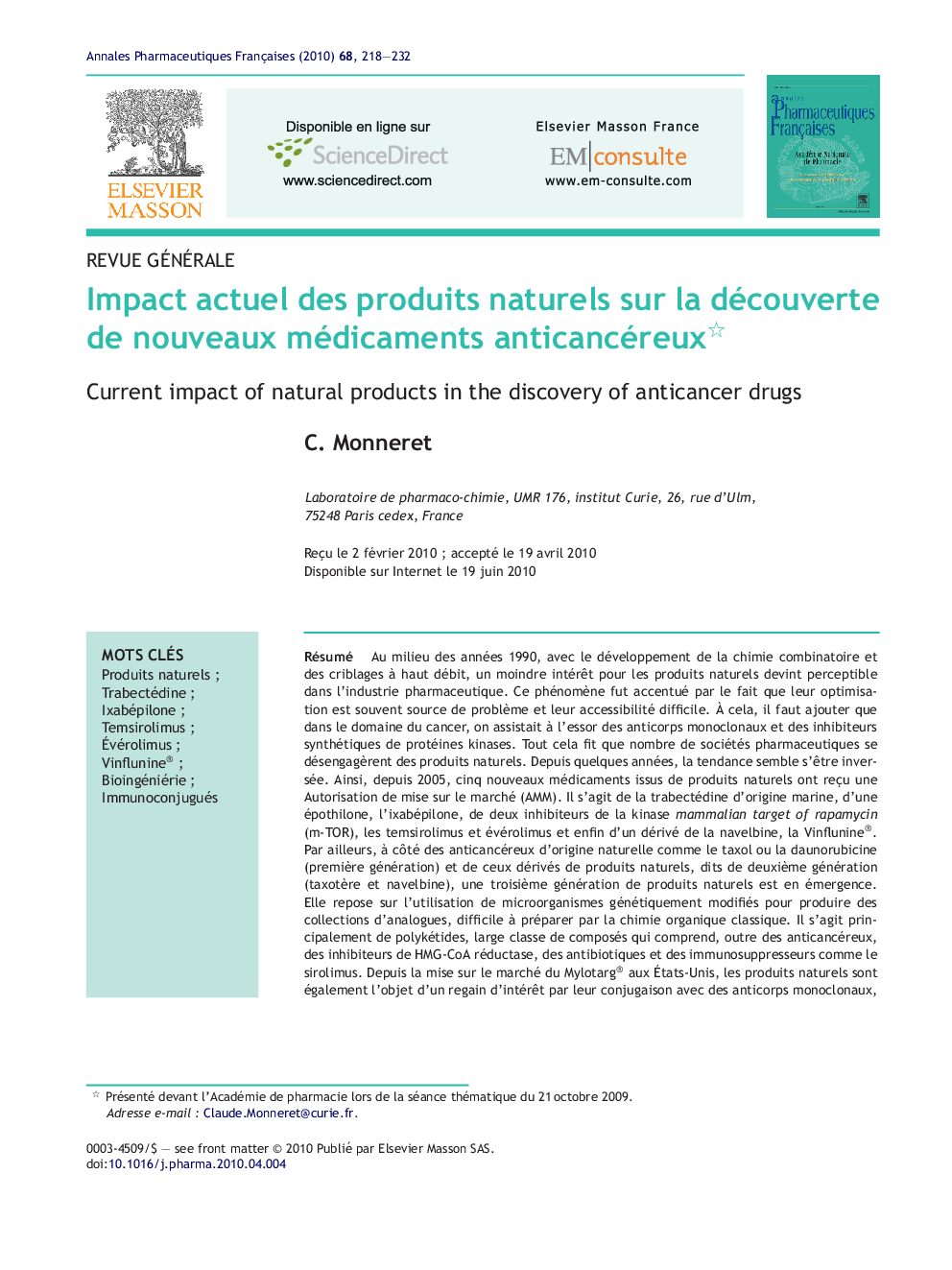| Article ID | Journal | Published Year | Pages | File Type |
|---|---|---|---|---|
| 2478366 | Annales Pharmaceutiques Françaises | 2010 | 15 Pages |
Abstract
Since the middle of 1990s, the development of combinatorial chemistry along with the high throughput screening have led to some lack of interest for natural products from the pharmaceutical industry. Moreover, purification and optimization of natural compounds are very often difficult and animal experimentations need enough supply of natural sources or alternatively need sophisticated total synthesis. In oncology, this increased disinterest was also closely connected with the rapid expansion of monoclonal antibodies and synthetic protein kinase inhibitors. However since 2005, with the approval of five new drugs by the FDA (trabectedin, ixabepilone, temsirolimus, everolimus and Vinflunine®), it appears that natural products are still present as direct or indirect sources of drugs. On the other hand, a third generation of natural product has arisen, which relies upon bioengineering using genetically altered producer organisms. This is particularly true of the polyketides where bioengineering harnesses their natural flexibility to expand their structural diversity. Several programs are going on to produce antibiotics, anticancer drugs or immunosuppressant. This combinatorial approach makes drug discovery by bioengineering complementary with conventional medicinal chemistry. With the approval of Mylotarg® by the FDA, increased interest has also been devoted to immunoconjugates, which represent a way by which highly cytotoxic natural products such as dolastatin, calicheamycin, duocarmycin and maytansin may be targeted to cancer cells while limiting their side-effects.
Keywords
Related Topics
Health Sciences
Pharmacology, Toxicology and Pharmaceutical Science
Drug Discovery
Authors
C. Monneret,
